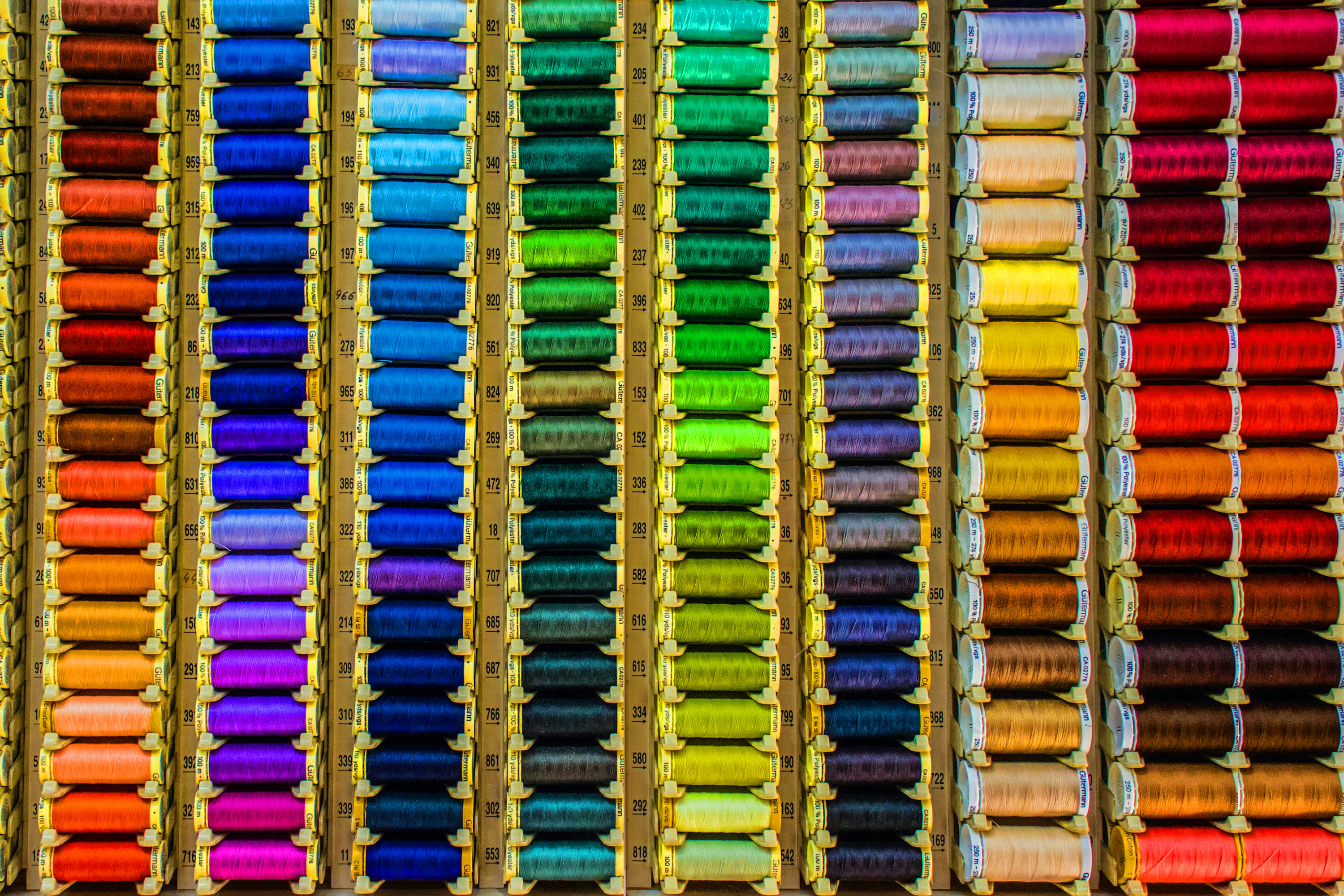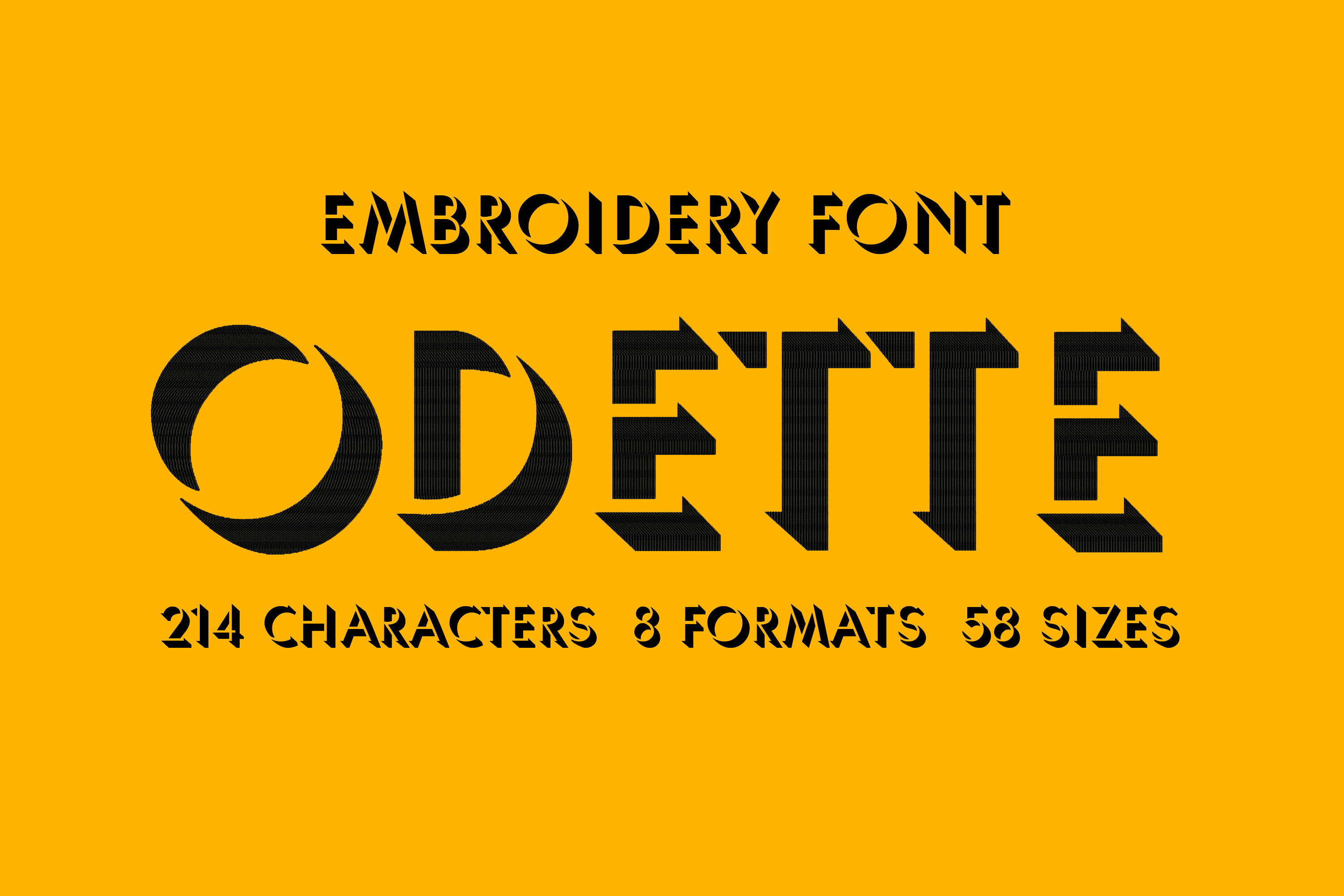US$1.10*
% US$4.40* (75% saved)Free shipping
Product number: F00546
Product information "Odette 3D Font"
Three-dimensional or 3D or 3-D is a common abbreviation for spatial, three-dimensional or three dimensions (in the language construction "in 3-D") and a synonym for the spatial representation of bodies. It is a representation variant that usually, but not necessarily, consists of the spatial dimensions length, width, and height. The term is also used to distinguish objects with spatial extent from two-dimensional (2D) objects, where the essential elements lie in a plane. To represent an object in 3-D means to represent each point of that object and its position in space by a vector whose components define the coordinates in three-dimensional space.
Various methods are available to transfer spatial images and models: Transferring the entire 3-D model (and rendering the views on the target device) Each method has advantages and disadvantages and is more or less practical, depending on the source material. Transfer of the entire 3-D model: By far the most complex method. Technically only feasible if the image is calculated in the computer anyway. High reality images cannot be calculated in real time with today's technology.
The main advantage, however, is that views from all directions can be calculated. With appropriate tracking mechanisms, it is possible to walk around models or walk into them. Many image-specific problems and orientation in space can be solved by human spatial perception, which is based on the fact that the distance between the eyes combines two different planar images on the retina into one image with a spatial depth (Z), with the help of which we can distinguish the foreground from the background.
Font is a set of characters designed in a specific typeface and realized according to the respective technical conditions. It is used for text creation and processing, typesetting and printing, and forms the basis of typography. A typesetting font consists of individual characters, the glyphs: usually lowercase letters, uppercase letters, umlauts, accented characters, numerals, ligatures, punctuation marks, special characters and small caps. These are assembled manually, by machine or electronically to form words, lines and more complex orders.
The scope of such a character set depends on the technology and the intended application radius of a typesetting font. The functional efficiency of the characters of a typesetting script requires, in the case of Western European alphabetic scripts, that they are arranged horizontally, in neighborhood with other characters of the inventory, according to a uniform rhythmic and stylistic principle. Only then can they be combined into a coherent, graphically balanced typeface.
The form of typefaces in general, and that of typesetting in particular, is characterized by two different modes of access: Reading and seeing (in the sense of looking). These are due to the "double character of writing." Writing is both abstract (semantic level) and sensuously concrete (semiotic level). In routine reading, attention is focused on the abstract side of writing. Records in alphabetical writing are not deciphered letter by letter, but word and line outlines are grasped holistically by means of eye jumps (saccades). In the process, details of the form of the written image escape attention, recede into the background, and are not registered or are invisible.
Various methods are available to transfer spatial images and models: Transferring the entire 3-D model (and rendering the views on the target device) Each method has advantages and disadvantages and is more or less practical, depending on the source material. Transfer of the entire 3-D model: By far the most complex method. Technically only feasible if the image is calculated in the computer anyway. High reality images cannot be calculated in real time with today's technology.
The main advantage, however, is that views from all directions can be calculated. With appropriate tracking mechanisms, it is possible to walk around models or walk into them. Many image-specific problems and orientation in space can be solved by human spatial perception, which is based on the fact that the distance between the eyes combines two different planar images on the retina into one image with a spatial depth (Z), with the help of which we can distinguish the foreground from the background.
Font is a set of characters designed in a specific typeface and realized according to the respective technical conditions. It is used for text creation and processing, typesetting and printing, and forms the basis of typography. A typesetting font consists of individual characters, the glyphs: usually lowercase letters, uppercase letters, umlauts, accented characters, numerals, ligatures, punctuation marks, special characters and small caps. These are assembled manually, by machine or electronically to form words, lines and more complex orders.
The scope of such a character set depends on the technology and the intended application radius of a typesetting font. The functional efficiency of the characters of a typesetting script requires, in the case of Western European alphabetic scripts, that they are arranged horizontally, in neighborhood with other characters of the inventory, according to a uniform rhythmic and stylistic principle. Only then can they be combined into a coherent, graphically balanced typeface.
The form of typefaces in general, and that of typesetting in particular, is characterized by two different modes of access: Reading and seeing (in the sense of looking). These are due to the "double character of writing." Writing is both abstract (semantic level) and sensuously concrete (semiotic level). In routine reading, attention is focused on the abstract side of writing. Records in alphabetical writing are not deciphered letter by letter, but word and line outlines are grasped holistically by means of eye jumps (saccades). In the process, details of the form of the written image escape attention, recede into the background, and are not registered or are invisible.
Product Number: F00546
Product Name: Odette
This design comes with the following sizes:
- from 0.875" to 8" in steps of 0.125"
- 214 Characters
- 58 Sizes
- 8 Formats
The following formats are included in the file you will receive: .DST .EXP .JEF .PES .VP3 .XXX .PEC .U01
You MUST have an embroidery machine and the software needed to transfer it from your computer to the machine to use this file. This listing is for the machine file only - not a finished item.
Odette 3D Three Dimensional Machine Embroidery Font Design, 3D Shaded Embroidery Pattern, Letters With A Shadow Cast, Font Design, Downloadable Fonts, Alphabet Design, Typography Design, Typeface, Letter Style, Unique Digital Supplies For Embroidery Machines






